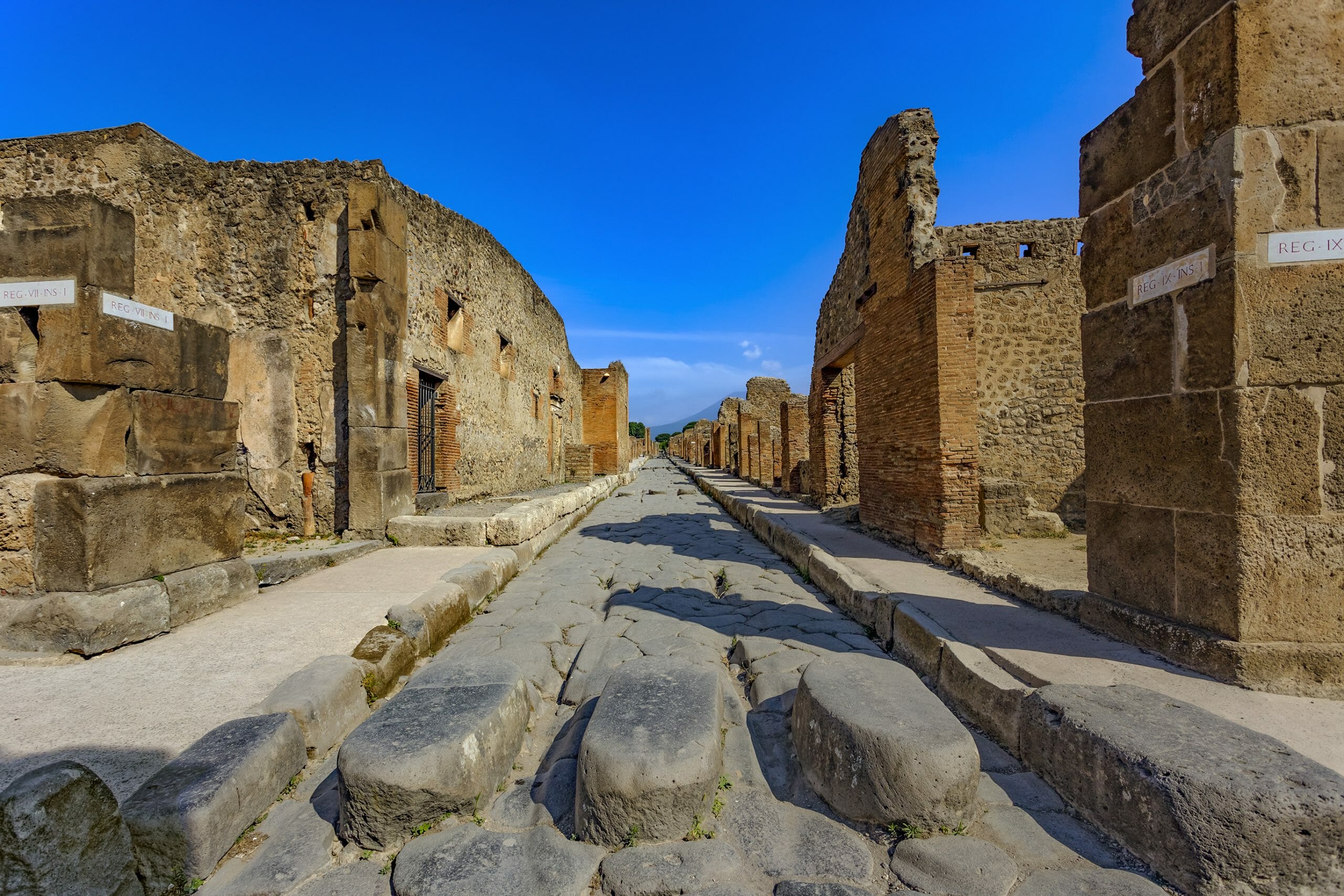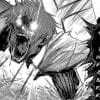Once a jewel of the Roman Empire, the ancient city of Pompeii was destroyed, and 16,000 people were killed when Mount Vesuvius erupted in 79 CE.
Today, 2.5 million visitors flock to the UNESCO World Heritage Site a year to feel the echoes of an ancient civilization buried in the ruins.
The History
The Greeks, Etruscans, Samnites, and Romans in 80BC chronologically conquered and controlled Pompeii. Its strategically built roads and proximity to the sea basin made it a center of commerce and trade in the Empire. The volcanic ash from Mount Vesuvius also made the land exceptionally fertile. It was a hub for the development of culture and the arts, particularly the Pompeiian frescoes.
Convinced that Pompeii was protected by the Gods, its 15,000 inhabitants never expected that the string of earthquakes leading up to the eruption foreshadowed the absolute devastation of their city.
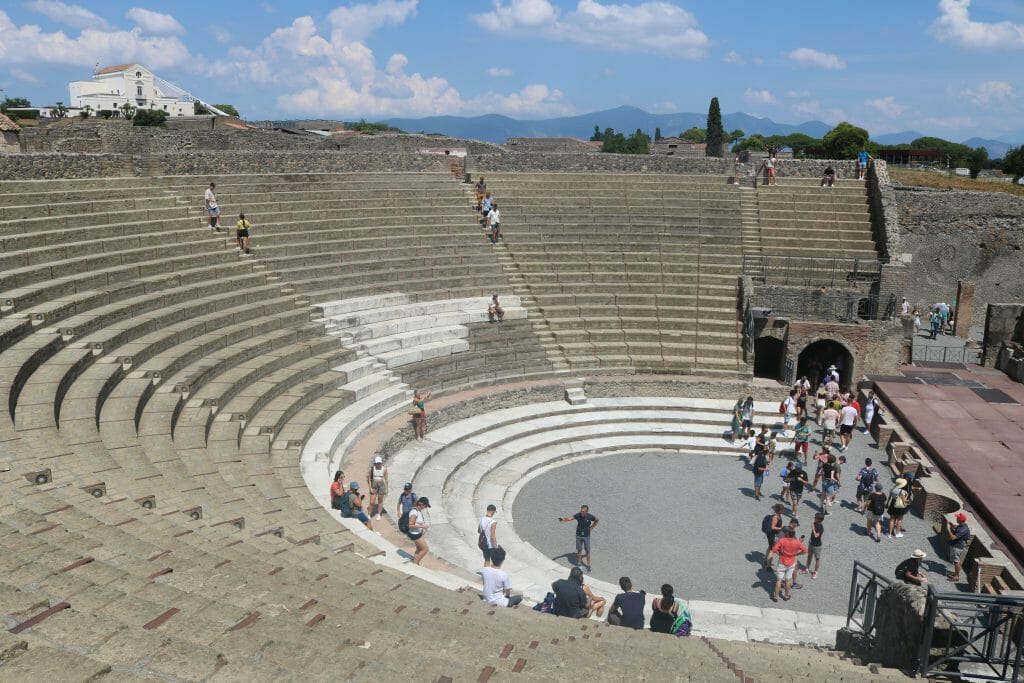
The Eruption of Vesuvius
When Mount Vesuvius erupted, it covered Pompeii in 6 meters (19 feet) of volcanic ash. A pyroclastic flow buried the city in ash for nearly 1,700 years and killed around 2,000 Pompeiians. The eruption also affected other cities, such as Herculaneum, Stabiea, and Oplontis, bringing the total number of deaths up to 16,000.
On the events of the eruption, a sign in the official Antiquarium of Pompeii reads:
Before eruption, Vesuvius looked like a fertile mountain, its slopes were occupied by rustic villas devoted to the production of wine…
On the 24th of August or October of 79 CE, as recent discoveries suggest, Vesuvius pours down a rain of lapilli and stone fragments onto Pompeii: the eruption lasted until the next day, causing roofs to collapse and mowing down its first victims. The people of Pompeii tried to take refuge in houses or put their hopes in flight, walking over the bed of pumice that was accumulating, now almost 2m. high.
However, at 8 on the following day, an extremely violent release of toxic gas and glowing ash devastated the town: it penetrated everywhere, taking anyone attempting to escape by surprise and making any kind of defence useless.
A rain of extremely fine ash, forming deposit of 6m, adhered to bodies and to folds in their clothes and blanketed aboslutely everything.
The Antiquarium of Pompeii
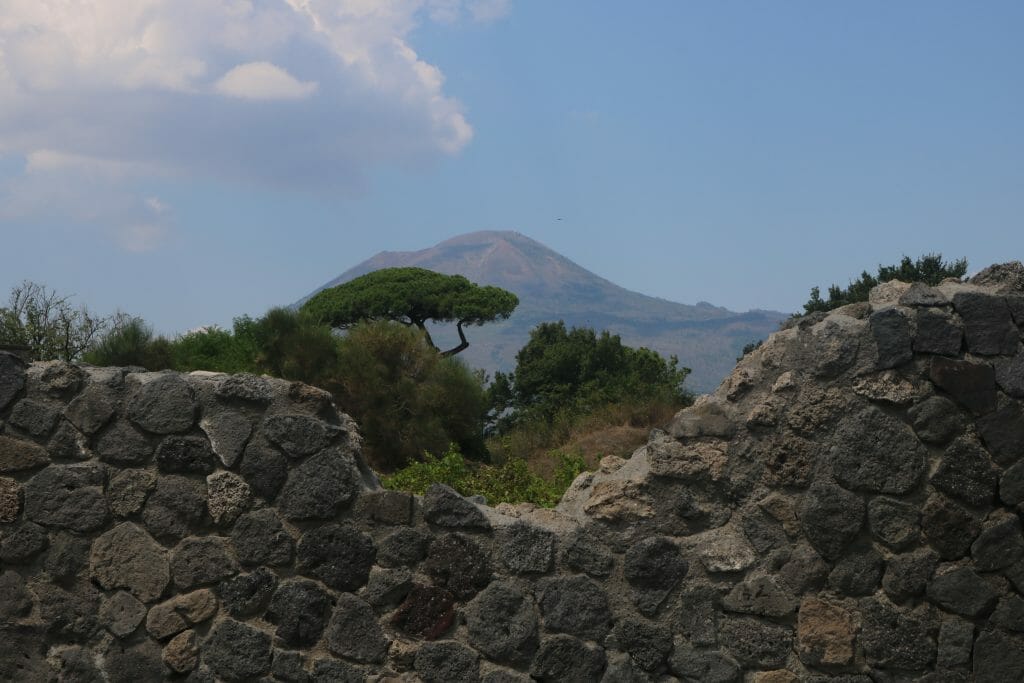
A first-hand account by Roman writer Pliny the Younger reads
Broad sheets of flame were lighting up many parts of Vesuvius; their light and brightness were the more vivid for the darkness of the night . . . it was daylight now elsewhere in the world, but there the darkness was darker and thicker than any night.
My Modern Met
The Excavation
Architect Domenico Fontana discovered the ruins in 1748, though archeologists had discovered frescoes earlier in the 16th century. According to My Modern Met, these polychromatic paintings on the walls are “some of the earliest known still-life depictions, as well as secular portraits, religious iconography, and erotic imagery.” Amongst the ruins were rare remnants of an ancient world that experts have used to piece together the past, such as entire loaves of carbonized bread, which show the poor and wealthy in Rome ate alike.
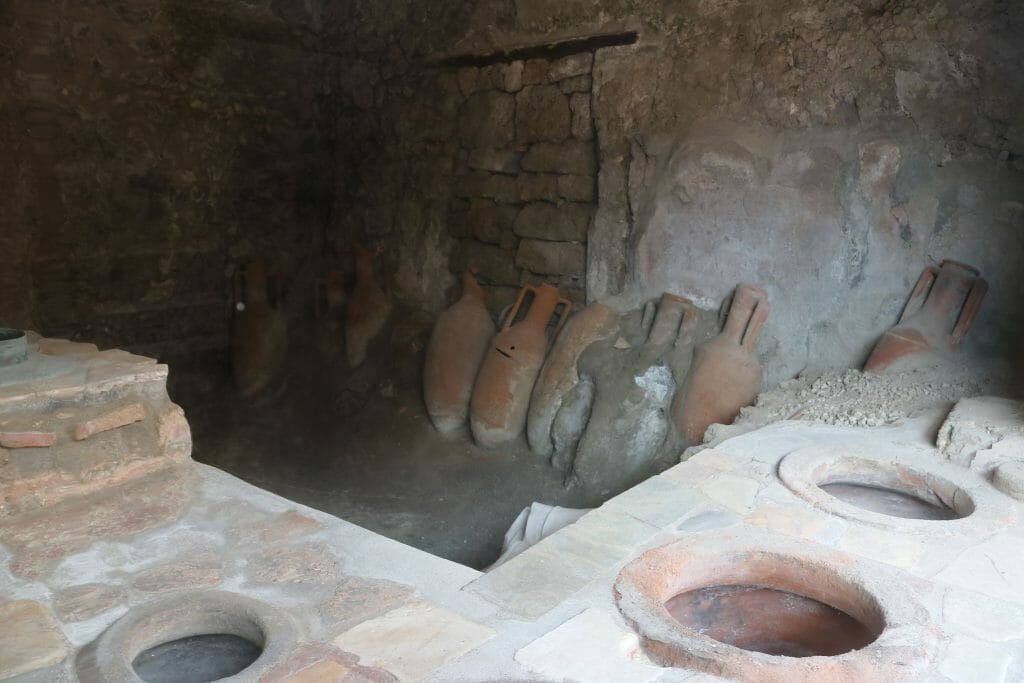
However, the most jarring discovery in the excavations was the remains of over 1,000 people, calcified in the exact positions they were in when the pyroclastic flow hit them. Though their bodies had long since decomposed, the bones remained in gruesome positions for the better part of two millenniums. Horses and domesticated dogs were also found in similar states. From 1893, they made over a hundred casts of the bodies to exhibit where they initially found them. Unfortunately, many were lost in the German bombing of 1943. The remaining casts are now on display in the Pompeii archeological site, while laser-scanned 3D copies were produced to loan to exhibits around the world.
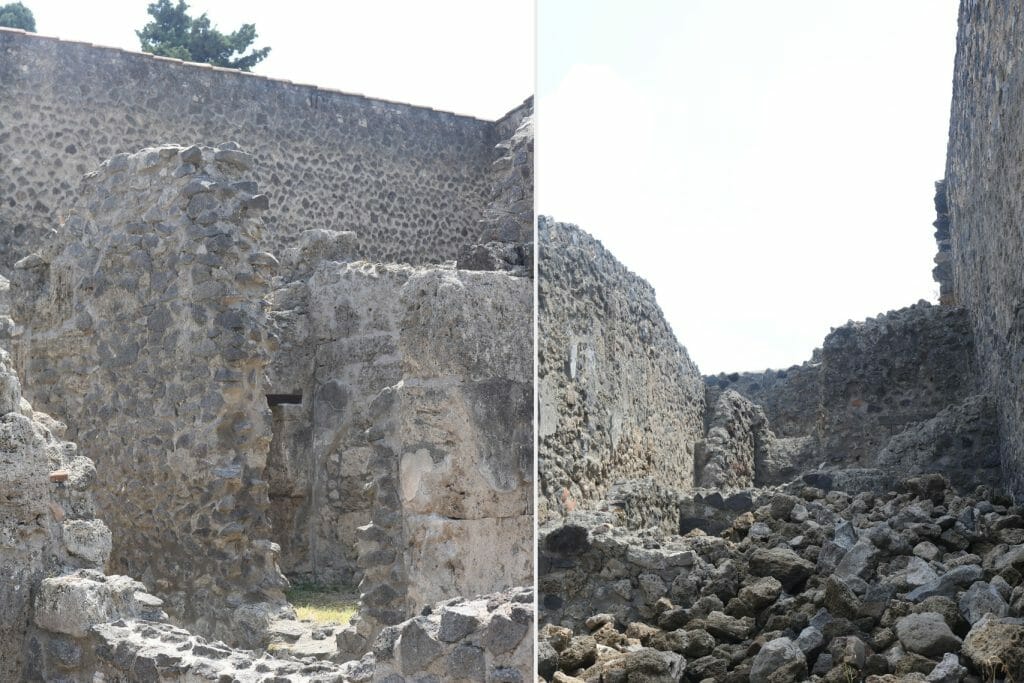
Current Research
Despite extensive research into the area, only two-thirds (44 hectares) of the ancient city has been excavated. Meanwhile, 2,000-year-old debris still covers the remaining 22 hectares. An old gladiator barrack, the Schola Armaturarum, collapsed in 2010, leading to the creation of the Great Pompeii Project, or the “Grande Progetto Pompei.” This involved the allocation of €105 million ($127 million), put aside by the Italian state and the EU, to preserve the already excavated areas.
Regardless, new findings emerging from the ruins are constantly redefining our understanding of the city as they fight to keep the heritage sight intact. According to local art, history, and culture specialist, Fiorella Squillante,
Everyone has heard of Pompeii, but what people never expect is that it’s still a living city, whose image changes and will continue to change, because its story hasn’t all been written… Even those of us who live it for work, get closer to it with renewed astonishment. We know that although it’s a city from the past, we — and future generations even more — will live it in the future, too.”
CNN
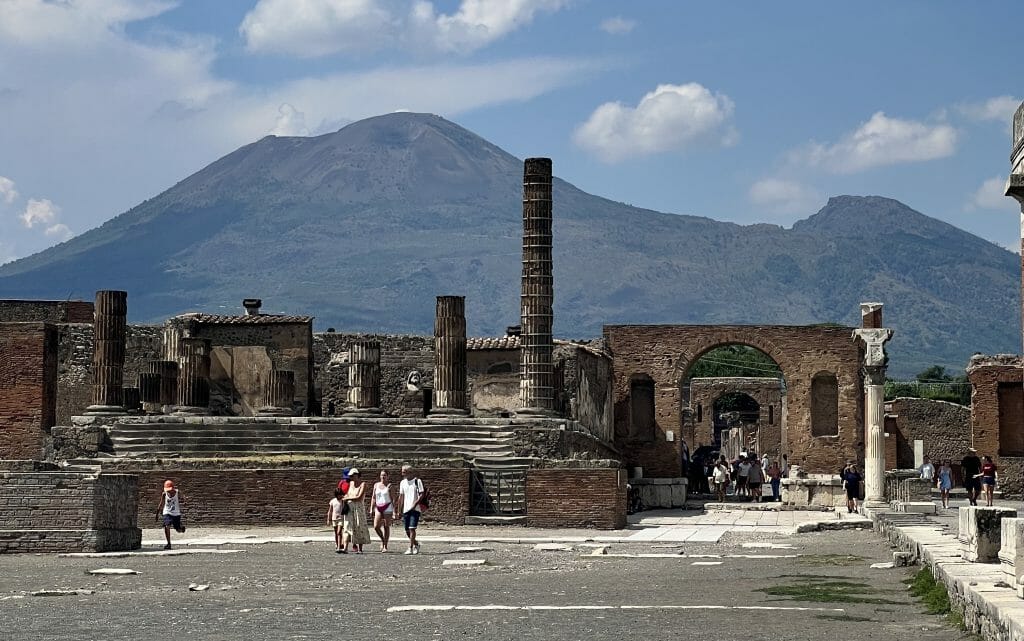
Click here to read about other lost cities, including Herculaneum, worth visiting.


